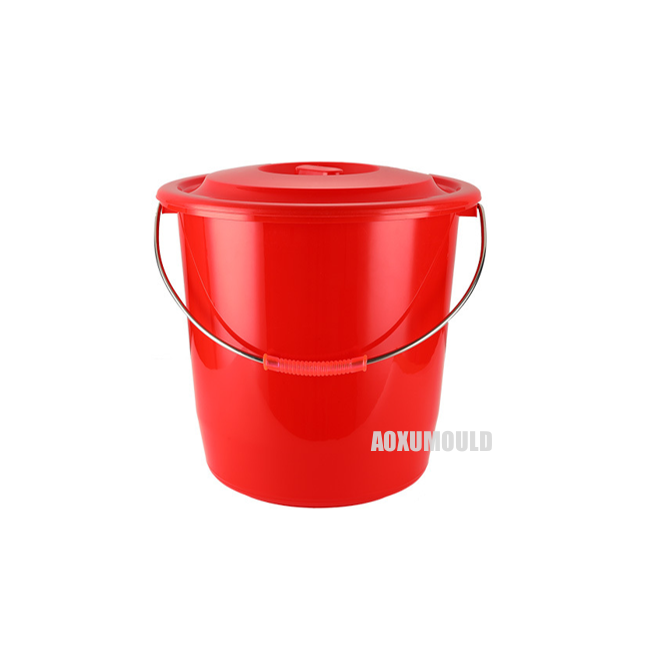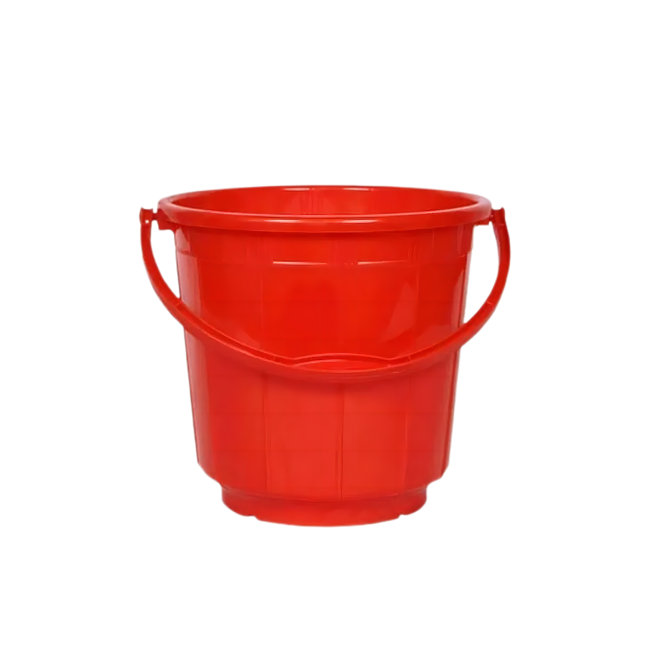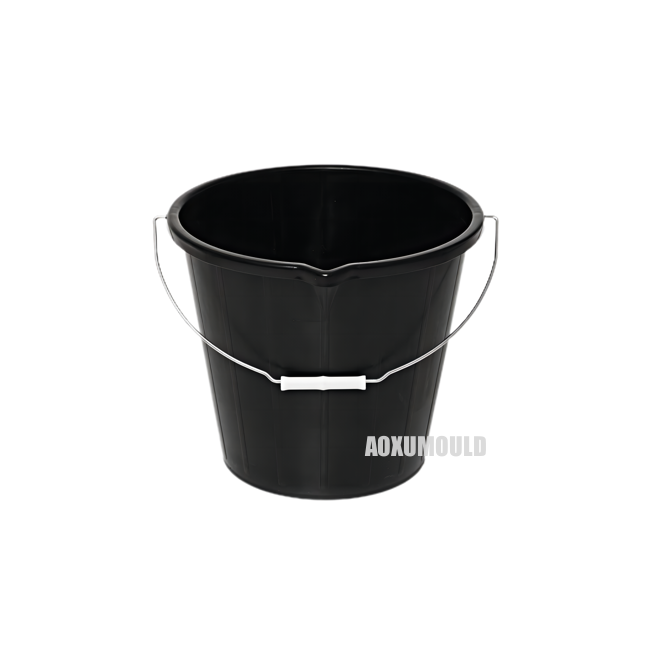Introduction
Water Bucket Moulds are special molds used to produce plastic containers such as buckets. The basic structure of a bucket mold includes the mold core, mold cavity, and injection molding system. The injection molding process heats and melts plastic particles, injects them into the mold cavity, and forms the shape of a bucket after cooling and solidification.
Manufacturing process
1. Mold design
The structure of the mold includes the cavity and the core, which need to be precisely designed according to the product size (310x300x260 mm) to ensure the shape and size of the plastic bucket are accurate.
2. Mold material selection
High-quality steels such as C45, P20, 718 and 2738 are selected to ensure that the mold has good wear resistance and long service life. The mold frame uses C45 material, which has high strength and durability and can support the long-term operation of the mold.
3. Injection system design
The hot runner large gate design is adopted, which can reduce material waste and improve production efficiency, ensure that polypropylene flows smoothly during the injection molding process, and avoid uneven injection molding.
4. Mold manufacturing
Surface treatment processes such as electroplating and polishing are used to improve the finish of the mold surface, reduce wear during the injection molding process, and ensure a smooth product surface.
How to maintain
1. Clean the mold regularly
After each production, the residual plastic in the mold cavity needs to be removed to prevent the plastic from solidifying and causing the mold to be blocked. Especially in the hot runner system, the nozzle and gate parts should be checked and cleaned regularly.
2. Inspection
Regularly check whether the water pipes of the cooling system are blocked or leaking to ensure that the cooling water flows smoothly and effectively control the mold temperature.
3. Lubrication and protection
A layer of anti-rust oil can be applied to the mold surface, especially when it is not used for a long time, so as to avoid rust caused by a humid environment.
4. Check mold accessories
Check whether the fastening bolts of the mold are loose, especially the bolts at the connection between the mold frame and the cavity, to avoid cracking or deformation of the mold due to looseness.
5. Mold storage
When the mold is not in use, it should be stored in a dry and ventilated environment to prevent moisture from affecting the mold material or accelerating its aging.
Mould Specifications
|
Mould name |
20L Plastic Water Bucket Mould |
|
Product material |
PP |
|
Product Size |
310X300X260mm |
|
Product weight |
585g |
|
Mould material for cavity &. Core |
C45, P20, 718, 2738 |
|
Mould base |
C45 |
|
Injection system |
Hot runner big gates |
|
Suitable injection machine |
550T |
|
Mould size |
530x530x456mm |
|
Mould lifetime |
More than 300,000pcs |
Plastic Water Bucket Mould Description

Design For Product &. Mould


Mould Try-out of Water Bucket Mould

Mould Components
Mould Steel

Hot Runner System

Standard Parts

FAQ
Customers' Feedback












